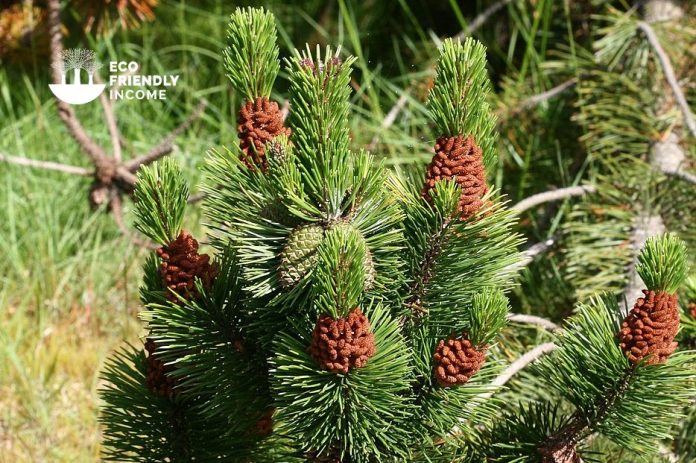
Featured Photo by S. Rae / CC BY 2.0
A field guide on how to identify and propagate Lodgepole Pine (Pinus contorta), a hardy tree that is native to western North America.
How to Identify Lodgepole Pine (Pinus contorta)
Leaves
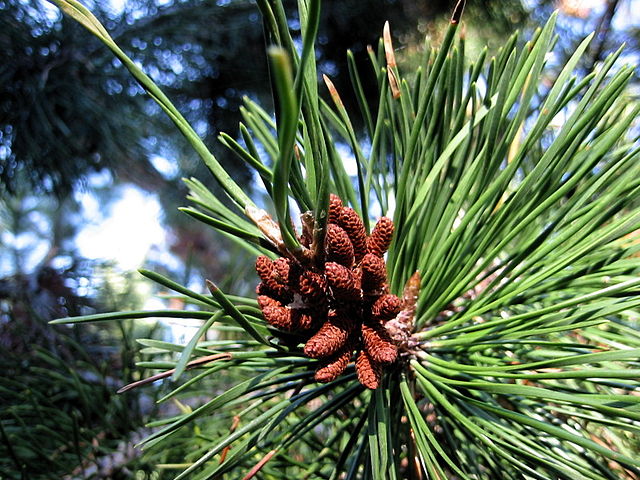
Lodgepole pine needles are linear-shaped, with entire margins (smooth), and grow on fascicles. Each fascicle has 2, thick, deeply grooved needles that grow in a twisted shape.
Bark
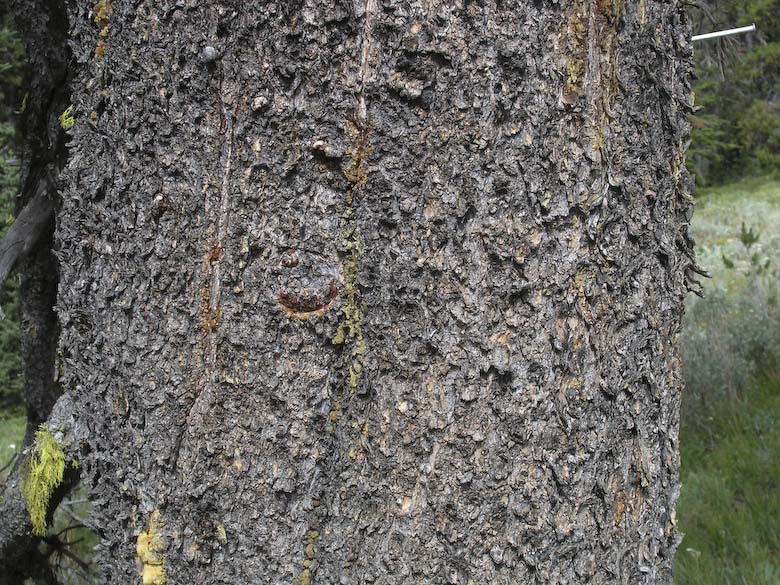
Lodgepole pine tree bark is thin and scaly, often having a reddish or yellowish hue.
The bark is divided into broad, shallow ridges, with narrow fissures between them.
Cones
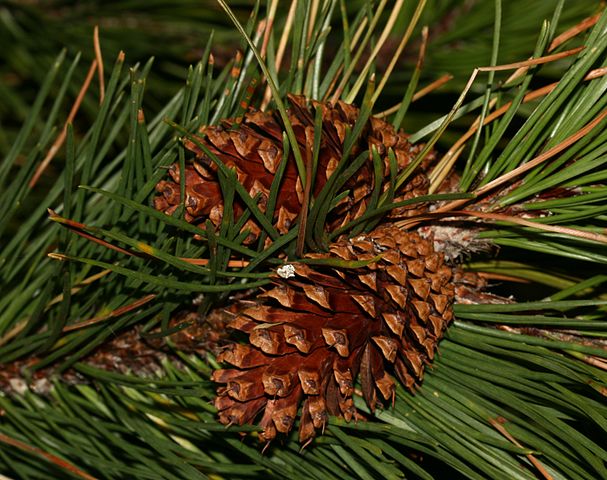
Lodgepole pine cones are green when immature, turning brown as they ripen.
They are typically 2–3 cm long and 1–2 cm broad, and have thick overlapping scales that give them a firmer, denser texture than other conifers.
Each scale has a sharp prickle at the end.
Lodgepole pine cones typically open when exposed to heat, releasing the seeds within.
Flowering Season
The cones appear in late spring to early summer and mature by the beginning of Fall.
Habitat
Lodgepole pines are typically found in a variety of habitats, from moist lowland valleys to dry, exposed subalpine ridges.
They grow best in mountain valleys and foothills, on well-drained soils in areas with cool summers and abundant moisture.
Lodgepole pines are commonly found in open coniferous forests in western North America, along the Rocky Mountains and the Cascade Range.
They can also be found in the following northern ecoregions:
Pacific Coastal, Rocky Mountain, Northern Corderilla & Yukon Interior Dry Forests.
Wildlife Value
Lodgepole pines provide an important source of habitat and food for a variety of wildlife.
These trees are a primary source of food for red squirrels, porcupines, and beavers, while their branches provide shelter for birds, bats, and small mammals.
The trees also provide nesting sites for raptors and other birds.
The seeds from lodgepole pines are an important food source for grouse, ptarmigan, and other seed-eating birds.
Additionally, the trees’ deadfall provides foraging opportunities for a variety of small mammals, such as voles and mice.
Finally, the bark of lodgepole pines provides foraging material for insects, which in turn provides food for many songbirds.
How to Propagate Lodgepole Pine (Pinus contorta)

Hardiness Zone: 3-8

Soil Type: Clay, loam, sand.

Water: Normal to low.

Exposure: Full Sun.
There are a couple of good techniques to propagate lodgepole pine:
- You can propagate by seed.
- You can propagate by taking cuttings.
Cuttings, while possible, are much harder to pull off.
In this article, we’ll only focus on propagation by seed.
But if you’re interested in cutting propagation, take a look at our supreme guide to plant cuttings.
Now let’s see how we can propagate by seed:
How to Propagate Lodgepole Pine (Pinus contorta) by Seed
Now if you got access to lodgepole pine near you, I advise you to just harvest cones yourself, which will give you fresh seeds.
If you can’t access any trees, no worries, you can always order them online at Wildabout Flowers.
Now lodgepole pines are particular, there’s some technique required to get the seeds.
Let’s take a look:
How to Harvest Seeds
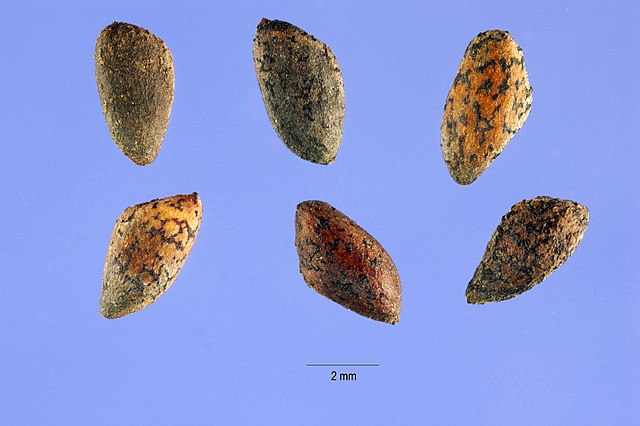
Now lodgepole pine cones normally only open during wildfires. Otherwise, the cones can stay on the tree for years and lose viability.
So when you harvest the cones, make sure you have a living cone. It should have a tinge of green but be mainly brown.
Gray cones are too old and the seeds inside lost viability.
Tip: Be careful when you harvest cones, they have sharp prickles, so it’s a good idea to wear gloves.
Now to open the cones to get the seeds, you need to simulate the heat of a wildfire.
The best way to do that is to simply put them into your oven, at 350F, for about 20 mins.
The cones will naturally open, then you’ll be able to knock out the seeds.
Now depending on which time of the year you harvested the cones, they might need cold stratification.
- Cones harvested during fall need stratification.
- Cones harvested mid to late winter are naturally stratified.
Stratification
To cold-stratify your lodgepole pine seeds, follow these steps:
- First, place your seeds into a ziplock bag with moistened sand, then tag the bag with the name & date.
- Next, put the bag into your freezer for 14 days.
- Then, take them out and put them into room temperature water for 24 hours.
- Finally, put them back into the bag and into your refrigerator for another 7 days.
Compared to other species, stratification is pretty short, which is nice.
Next, just sow them into a mix of peat moss and sand, water gently, and cover them with plastic wrap to maintain moisture.
Seeds should germinate within the week.
FAQ
Q: What are lodgepole pines used for?
A: Lodgepole pine is commonly utilized in the production of lumber, plywood, paneling, doors, windows, furniture, railway ties, mine props, and fence posts.
Q: Are lodgepole pines fast-growing?
A: Lodgepole pines have a moderate growth rate, with established trees growing from 1 to 2 feet per year.
Q: What climate does lodgepole pine grow best in?
A: Lodgepole pine has a remarkably wide range of environmental tolerance compared to other conifers in North America, capable of growing in areas with cold, wet winters and warm, dry summers. Even in the drier conditions of its southern range, it is able to thrive.
